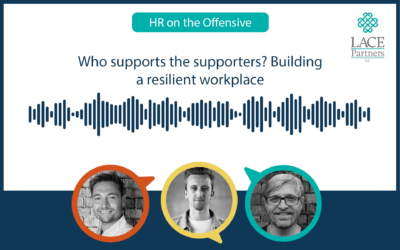We recently spoke to Sam Isaac from Neeyamo about a whitepaper they produced in 2021 which looked at what they saw as some of the emerging trends in the payroll space. Below is a summary of some of the key discussion points from our HR on the Offensive podcast, in which Chris Howard and Chris Kirby spoke to Sam to get his take on some of the emerging trends highlighted in the report. You can listen to the podcast here.
The impact of ‘Cloud X’ for Payroll teams
When Neyamoo talk about ‘Cloud X’ what they are focusing on is the fact that the impact of migrating to the Cloud can very much be seen as a force multiplier.
Neyamoo talk in their whitepaper about how – for global payroll – the impact of effective Cloud adoption has been to democratise the access to technology and the impact that it can have on what is often called ‘the long tail’ of smaller countries. For example, the roll out of a payroll solution can now impact multinational businesses that have even the smallest number of employees across the most remote regions globally.
What has been seen – certainly in the last two years – is a more widespread adoption of Cloud payroll solutions and one of the biggest benefits for Payroll teams is that it enables innovation of experiences and processes to happen at rapid pace. That innovation can happen because of the very nature of Cloud platforms. You are not hamstrung by a legacy system and you aren’t trying to ‘retro fit’ any new innovations to old technologies. You aren’t having to deploy ‘patches’ because of the ability of Cloud systems to quickly evolve and deploy at pace, meaning tax and legislative updates can be delivered with minimum of fuss, reducing your compliance risk.
If you are running a global payroll then being in the Cloud should be your minimum baseline. You need your payroll system to be integrated and talking to other platforms within your business, especially HCM systems, because reducing the challenges of data dependencies across multiple systems is essential if you want to deliver maximum productivity and efficiency in your business. You don’t want your people spending most of their time on interpreting data when an effective Cloud solution that is integrated can deliver more accurate results than double keying.
The voice of the employee and the use of analytics
Within the whitepaper there is a section which focuses on data and analytics and its use within payroll. A common theme that is focused on by Neeyamo is the ‘voice of the employee’. Every time an employee interacts with the Payroll and HR teams via a system, they leave behind a digital footprint. These are data elements that can reflect the user experience of the employee. This information can be so powerful for Payroll teams in trying to understand and improve on the experience with the employee, but how many Payroll teams are leveraging these data points to improve employee experience, when it comes to their payroll processes?
In the whitepaper the report cites that 83% of payroll leaders have said that the effective use of payroll analytics would help them to improve payroll accuracy. That is 17% of payroll professionals who do not yet see the value and impact of payroll data. Why?
This could be because of the lack of trust in the data that is being used. As mentioned above when looking at the value of implementing a Cloud system, if you are taking data from different systems and you have not been able to properly integrate that data into a sole source of truth, the process of collating that information and it being useable to deliver valuable insights, becomes exponentially more difficult. So, the answer is not that the payroll professionals questioned do not see the value, but perhaps the issue lies in the trust of how to get the data accurate and in a more simplified format to interpret is the root cause of this problem.
AI in payroll
Artificial Intelligence (AI) can be such a broad subject. So what is happening in the payroll space for AI and how is it being used to help Payroll teams?
At the root of the drive to use AI in payroll is the importance of collating data points and interpreting data. If you are a large multinational organisation with operations across many different business units and regions, gathering that data and being able to effectively interpret it is essential. Machine learning algorithms are able to pattern match data to identify potential anomalies and either proactively address the issues or flag it when errors occur. At Neeyamo, for example, they have a unified global data layer which brings together data points from across different jurisdictions and gives the algorithms a larger canvas to play with.
It is about the complexity of your processes. The more complex the data points and information feeding into your system, the more complex your process is, which means the need to have AI to help you with processing so much data becomes vital.
How does blockchain impact payroll?
Whilst blockchain is a much talked about concept, it remains an approach that many are speculative over its value in certain business circumstances. But blockchain is about data; the protocol that governs it, the data blocks, the distributed ledger and the resultant immutable record, are all the building blocks. At Neyamoo they believe that there are three core areas in which the application of blockchain could potentially see future use, which are:
- Self-sovereign identity and data exchange (you control your data, as well as having power over how you distribute it)
- Application of smart contracts (you control the contracts you have; they are encrypted so only you and the other party you exchange the contract agreement with can access, which allows for improved compliance as well)
- Cryptocurrency as a form of payment (instead of traditional currency for payroll).






